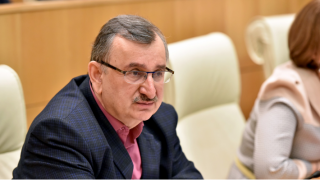United National Movement member, Roman Gotsiridze, commented upon the ruling party’s Road Infrastructure Development Plan according to which about 1,000 kilometres of motorway are to be built in Georgia by 2020. “They are planning to build 800-1,000 km of roads in the upcoming four years, 550 km of which will be a modern-style motorway. One of these , and I’m quoting, will be ‘the toughest in Europe’ which means that it will be built in the mountains and they are saying all of this when they have a two-year setback for their straight-line motorway construction plan and they have even failed to use up the originally allocated funds,” said Mr Gotsiridze.
FactCheck took interest in this issue and looked into it.
According to the information of the Roads Department of Georgia, the originally agreed deadlines for the construction of certain parts of the high-speed motorway have indeed been modified:
Table 1: Parts of the High-Speed Motorway with Modified Finalisation Dates
| Name of the Object |
Originally Agreed Deadline |
Extended Deadline |
Note |
| Sveneti-Ruisi |
01.08.2009-01.08.2011 |
15.05.2013 |
Finished |
| Ruisi-Agara |
17.12.2012-17.12.2014 |
17.12.2015 |
Finished |
| Agara-Zemo Osiauri |
18.09.2014-18.12.2016 |
|
In Progress |
| Zestaponi-Kutaisi |
24.07.2013-24.07.2015 |
31.03.2017 |
In Progress |
| Kutaisi Motorway |
26.12.2011-26.12.2013 |
28.02.2015 |
Finished |
| Samtredia Motorway |
17.07.2012-17.07.2014 |
15.12.2015 |
Finished |
| Kobuleti Motorway 1 |
01.09.2011-01.08.2013 |
01.06.2014 |
Finished |
| Kobuleti Motorway 2 |
24.05.2013-18.02.2016 |
31.07.2017 |
In Progress |
As the Roads Department of Georgia explains, the extension of the deadlines for the construction of parts of the motorway was mainly due to the delays in the acquisitions of private properties in the vicinity of the motorway and the unforeseen but necessary additional construction work.
Of these parts of the motorway, special emphasis must be made on the Zestaponi bypass road of the Zestaponi-Kutaisi-Samtredia part of the motorway (third lot) whose finalisation date, as the table reflects, was postponed by almost two years. This is the second case when the deadlines for the construction of this part of the motorway have been extended. According to the first extension, the construction of the 15-km Zestaponi bypass road (four lanes, 19 bridges and five pedestrian bridges) was to be finished by the end of July 2016 but the construction work was not finished in time and the deadline was shifted once again.
According to the explanation of the Roads Department, the modification of the deadlines for the construction work of the Zestaponi bypass road is due to the same reasons as in the cases of other parts of the motorway. According to the Department, an 8-km strip of this road has already been paved with concrete in both directions (16 km in total) whilst the surface has been levelled, water drainage pipes have been installed, underground passes have been built and medium and high voltage power lines have been relocated on the remaining part of the roadway.
As for the usage of the money allocated for the high-speed motorway, you can see the statistics of the past few years below:
Table 2: Money Allocated for the Construction of the High-Speed Motorway from 2013 to 2016 (First Nine Months)
| Year |
2013 |
2014 |
2015 |
2016 |
| Budget (Plan) |
64,265.3 |
60,486.0 |
44,460.2 |
64,630.0 |
| Donor (Plan) |
221,755.0 |
233,625.0 |
216,480.0 |
206,920.0 |
| Budget (Actual) |
54,957.8 |
60,306.9 |
44,006.0 |
36,967.0 (9 Months) |
| Donor (Actual) |
212,426.8 |
222,790.5 |
213,321.6 |
123,382.3 (9 Months) |
As the table above reflects, small amounts of money allocated annually for the construction work were not used up in the last four years. As for 2016, according to this year’s data, about half of the allocated money remains unused.
According to the Georgian Dream’s Road Infrastructure Development Plan, a total of 550 km of modern motorways will be constructed by 2020.
The construction of the high-speed motorway (Tbilisi-Senaki-Leselidze) started in March 2006. The motorway consists of the E-60 (Poti-Tbilisi-Red Bridge) and E-70 (Poti-Batumi-Sarpi) highways. Its overall length is 390 kilometres. According to the information of the Roads Department of Georgia, only 141.8 kilometres have been opened since 2006. A total of 68 kilometres of road was opened from 2006 to 2012 whilst in the period from 2012 to 2016 (until today) this figure has increased to 73.8 kilometres.
Given this information that it has taken almost ten years to construct a mere 141 kilometres of motorway, it is hard to say whether or not the construction of 550 km of modern motorways in just four years will actually be possible.
Conclusion
The original deadlines for the construction work on certain parts of the high-speed motorway have indeed been modified and extended (postponed by one to two years). Hence, the setback with regard to the original plan is evident. In addition, in the first nine months of 2016, almost half of the money allocated for the construction work remains unused.
Hence, Roman Gotsiridze’s statement is
TRUE.








